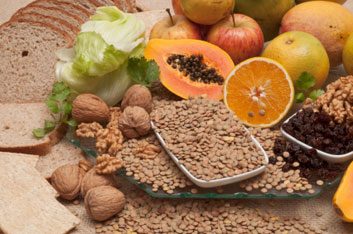
What you eat matters
We all know that well-balanced diet is necessary for good health. When we eat well, we fuel our bodies with quality nutrients while keeping our digestive tracts happy and “regular,” as opposed to achy, bloated or (yikes!) constipated.
A healthy diet is also one of the best ways to reduce one’s risk of colon cancer, which is the second most common cause of cancer death in both men and women, according to the Colorectal Cancer Association of Canada (CCAC).
Here’s what to eat for a happy, healthy digestive tract.
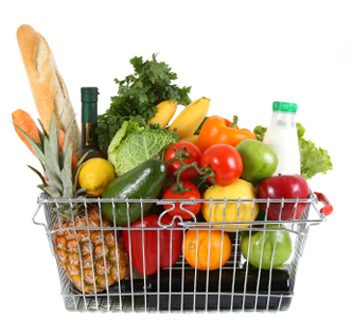
Whole foods are best
The CCAC recommends a diet high in fruits and vegetables, whole grains, lean protein and healthy fats, citing studies that suggest these foods reduce colorectal cancer risk.
Conversely, avoid eating a diet heavy in red meat, refined foods and saturated fats: these are linked to an increased cancer risk.
Many foods that are rich in vitamins and minerals are also high in fibre, which is one of your digestive tract’s best friends.
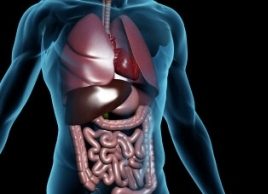
What fibre can do for you
Fibre is comprised of the structural matter of fruits, vegetables and grains. There are two kinds of fibre, soluble and insoluble.
Soluble fibre dissolves into a gummy gel and slows the passage of food from stomach to intestine, so you feel full longer after eating. Good sources of soluble fibre include oats, legumes, rice, potatoes, some fruits like apples, and some green veggies like broccoli.
Insoluble fibre is also known as “roughage” since it doesn’t dissolve. It retains water, helping to produce softer, bulkier stools and promote regular bowel movements. Good sources of insoluble fibre include whole bran, whole grain products, seeds, and the skins and peels of many fruits and vegetables.
In addition to helping in weight control (remember, fibre helps you feel full) and promoting regularity, a high-fibre diet may lower your cholesterol level and help reduce your risk of cancer, according to the Canadian Diabetes Association.
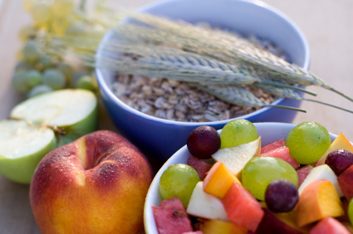
The best high-fibre foods
Women should aim to consume 25 grams of fibre daily and men need 32 grams, says Dr. Clarence KW Wong, an Edmonton gastroenterologist and board member at the Canadian Digestive Health Foundation.
Although you can buy over-the-counter fibre supplements, the best way to get your daily fibre is through a healthy, balanced diet following Canada’s Food Guide. Fill your shopping cart with these fibre-rich foods:
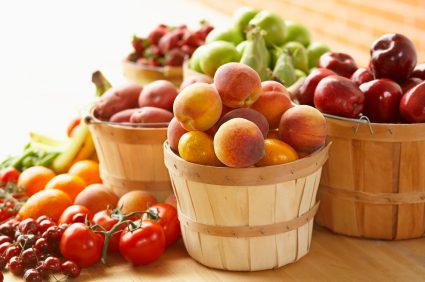
Fruit
• 1 cup raspberries = 8.0 grams of fibre
• 1 medium pear (with skin) = 5.5 g
• 1 medium apple (with skin) = 4.4 g
• 1 ¼ cup strawberries = 3.8 g
• 1 medium banana = 3.1 g

Fruit
• 1 cup raspberries = 8.0 grams of fibre
• 1 medium pear (with skin) = 5.5 g
• 1 medium apple (with skin) = 4.4 g
• 1 ¼ cup strawberries = 3.8 g
• 1 medium banana = 3.1 g
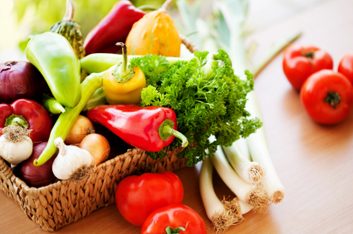
Cooked veggies
• 1 medium artichoke = 10.3 g fibre
• 1 cup peas = 8.8 g
• 1 cup broccoli = 5.1 g
• 1 cup corn = 4.2 g
• 1 cup Brussels sprouts = 4.1
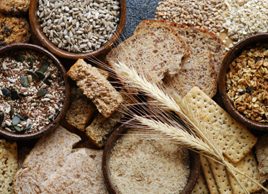
Grains, cereal and pasta
• 1 cup whole wheat spaghetti = 6.2 g fibre
• 1 cup pearl barley = 6.0 g fibre
• 1 cup oatmeal (regular or instant) = 4.0 g fibre
• 3 cups popcorn (air-popped) = 3.5
Related:
• Quiz: How much do you know about fibre?
• 10 ways to get more fibre
• 6 secrets to eating enough fibre
